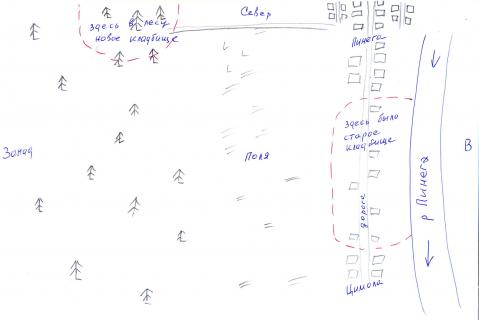From 1940 onwards Polish citizens deported from territory occupied by the USSR after 1939 were transferred to Pinega settlement. A decree of the Presidium of the USSR Supreme Soviet (12 August 1941) freed the Poles but many of them had no way of leaving and remained there until the end of the war.
In 1943 there were 106 former Polish deportees in Pinega and a further 30 in Tsimola, the neighbouring village. Those who died were buried in the old village graveyard between the two settlements. After the war the graveyard was no longer used and today it has disappeared under residential and commercial buildings. In 2013 Bogdan Tkachuk, nephew of one of the former deportees, Juliana Michalska (died 1944), erected a cross in her memory in the Pinega settlement’s new graveyard.
The Memorial online database (2025) includes the names of 56,173 Polish citizens deported to the Arkhangelsk Region (eight of whom were sent to Pinega) and records that 3,872 died there. (The source is the 1997 database mentioned below.)
36,454 of the deportees were men and women of Polish nationality, 11,883 were Jewish, 4,904 Belorussian and 1,894 Ukrainian.
*
The database names 70,783 Polish citizens deported after 1939, almost all from databases for the Arkhangelsk and Vologda Regions, and lists 4,690 who died while in Soviet special settlements.
| State of burials | Area | Boundaries |
|---|---|---|
|
not preserved
|
not determined
|
not delineated
|
[ Original texts & hyperlinks ]
“The Gulag in Onega district”, In the North forum, 2 November 2011
Polish deportees in the Arkhangelsk Region: A database compiled by the Information Centre of the region’s Internal Affairs department (Memorial REC, Moscow, 1997)
“Pinega settlement old cemetery. Burials of deported Poles”, Virtual Museum of the Gulag [retrieved, 27 May 2022; no longer accessible]

